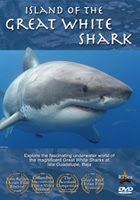 Clear-cutting the Amazon that denudes acres of vital rain forest; strip mining that gouges deep into the hillside with discarded rubble filling valleys and streams - these are some of the industrial harvesting techniques that have a dubious if not villainous reputation with many conservationists and environmental scientists. In the oceans, bottom trawling has a similar reputation.
Clear-cutting the Amazon that denudes acres of vital rain forest; strip mining that gouges deep into the hillside with discarded rubble filling valleys and streams - these are some of the industrial harvesting techniques that have a dubious if not villainous reputation with many conservationists and environmental scientists. In the oceans, bottom trawling has a similar reputation.The technique of bottom trawling involves large nets that scrape along the ocean floor, catching bottom-dwelling fish and other animals like shrimp. The drawbacks to this technique are two-fold: there can be a tremendous amount of unwanted animals caught, known as bycatch, and the scouring motion can be very destructive to the ocean bottom, much like clear cutting and strip mining, leaving behind crumbled reef structures that took decades to build - a marine ecosystem totally disrupted, its recovery in question.
But a more prudent use of bottom trawling in soft, sandy bottom areas may be proved viable. At least that is the hope of fishermen along the Central California coast who are watching the ongoing efforts of researchers from the California State University Monterey Bay in conjunction with the Nature Conservancy. They are conducting a three-year study to determine the long-term effect of bottom trawling on the soft sediment that makes up 70 percent of the Continental shelf along California.
In an area of 3.8 million acres that is currently listed as an "essential fish habitat" through an arrangement with the Nature Conservancy and the Pacific Fishery Management Council, tests are being conducted where a portion of the sea floor is bottom trawled and then 2 weeks later
 an ROV does a fly-over to survey conditions, followed by a 6-month and one-year checkup. The use of the ROV provides a better picture of how the ocean floor is recovering and to document what interactions are taking place, compared to other sampling techniques.
an ROV does a fly-over to survey conditions, followed by a 6-month and one-year checkup. The use of the ROV provides a better picture of how the ocean floor is recovering and to document what interactions are taking place, compared to other sampling techniques.“An ROV allows us to have our eyes underwater, looking at everything that’s going on.” said CSUMB professor James Lindholm said.
This research is confined to soft-sediment environments and Lindholm makes no projections as to what the final analysis and results, which are years away, will show. “There’s just a handful of people doing trawl-related research worldwide and outside of really charismatic habitats, we don’t know very much,” said Lindholm. “If there’s one thing we’ve learned, it’s to not make any judgment based on what we see live when we’re flying over the bottom.”
But local fishermen are hoping that the research could help fisheries regulators develop management techniques that would allow limited bottom trawling in very specific areas. “Fishermen have always said that grounds that are trawled are better fishing than non-trawled grounds — a lot of the organic nutrients get stirred up and reintroduced to the ecosystem,” said one local fisherman.
Bottom trawling will remain controversial as it has proven itself to be very destructive in many of the ocean environments where it has been used. Even with this ongoing California research, there is still the issue of bycatch - ranging from unwanted bottom creatures to open water animals like turtles and sharks. If the California studies show a sustainable level of recovery in soft sediment areas, there are still other serious ecological issues that must be addressed before regulators should endorse bottom trawling in any form.
Read more about this research in the High Country News.







No comments:
Post a Comment